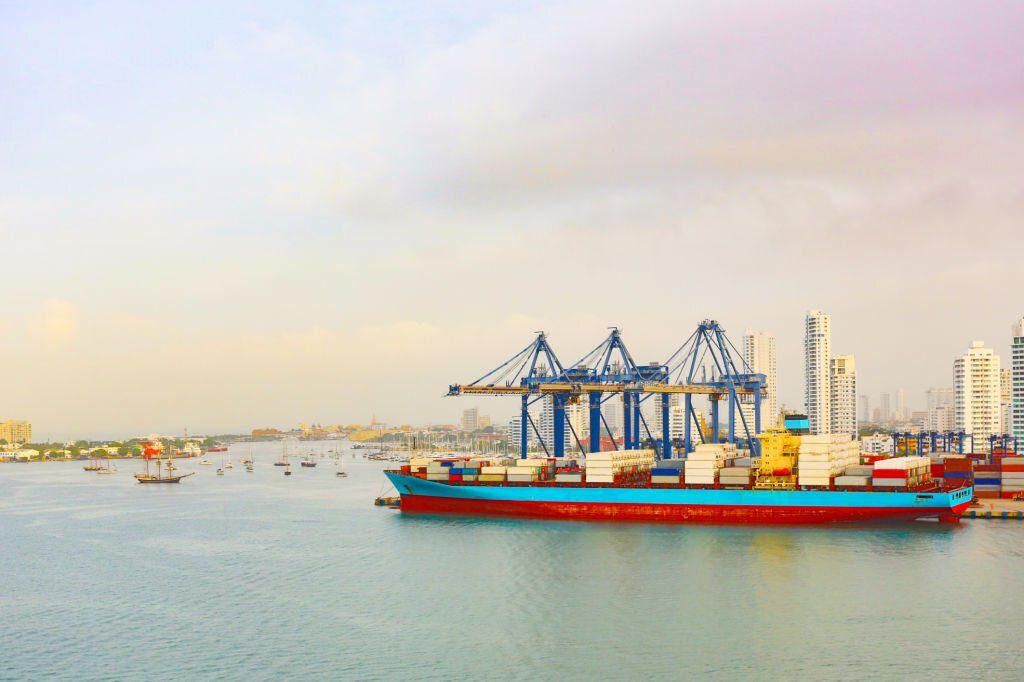The ports of our country are essential to our economic system and intermodal transport system. 95 percent of all cargo that comes into within the United States comes by sea and more than 360 ports and commercial facilities across the nation facilitate the movement of goods between destinations.
Ports can also have an influence on the local economy as well as regions. This section provides more information about the economic impact ports have on regional and local economies.
Ports are the primary subject of this Ports Primer. However, many aspects could apply to larger intermodal freight facilities, which are not located near waterways. They are often described as ports that are inland. While Ports Primer Ports Primer concentrates on the aspects of transporting goods that port-related activity involves There are many problems (e.g. idle ships) that relate to the travel/passenger aspects of port-related functions.
The National Economy
American ports provide gateways to both global and domestic trade. According to the American Association of Ports, Authorities states the fact that U.S. shipping ports handle more than 99 percent of the world’s cargo in terms of volume, and 66% in value.4 AAPA represents the trade associations of the public ports in both the United States and Canada. These figures are significant given the fact that international trade accounts for more than 30 percent of U.S. GDP. Gross Domestic Product (GDP). To meet the consumer demands increased number of ships are visiting U.S. shipping ports.
Port-Related Jobs
Ports offer substantial local employment opportunities for many communities. Ports can be employed as employers or help support jobs in related industries such as rail transportation, and trucking. As per the American Association of Port Authorities in 2014, deepwater ports offered support to 541,946 workers. The median wage of the employees was $44,273. The port’s activities also generated more than 23,000,000 new jobs in related fields and had an economic benefit for the local community.
Major Shipping Commodities
The most significant items transported through U.S. Ports are:
- Products from petroleum (such as aviation oil, gasoline natural gas, and aviation oil)
- Chemicals and products related to them, such as organic fertilizers
- Coal
- Products from the farm and food industry: flour, wheat corn, flour. Soybeans, rice. Cotton.
- Wood products from forests: lumber and woodchips
- Steel and iron
- Soil, sand, gravel, rock, stone
Additional goods were transported through the largest US ports.
- Automotive parts, automobiles, and machines
- Electronics, shoes, clothes
Ports are capable of handling a broad assortment of different commodity mixes. Ports may concentrate on a particular type or type or a variety of commodities. Other ports might handle a range of.
Intermodal Transportation System
Illustration of the relationship between consumers and goods using highways.
The Intermodal Transportation System connects products to customers.
Ports can serve as transportation hubs that facilitate the flow of goods between companies in the local community or across the world. In the illustration, ports are able to connect consumers and goods via the rail system, highways, or air transport. They can be small intercoastal ports or seaport ports that enable the movement of goods between communities. Intermodal Transportation refers primarily to the transportation of goods across different transportation modes.
If trade growth is expected to continue to grow ports could consider increasing their capacity inside through increasing the efficiency of their operations or investing in infrastructure that will accommodate larger vessels. Ports may also work with metropolitan planning groups, state as well as Federal Departments of Transportation, or other organizations to increase capacity for transport outside of the port. This will help reduce bottlenecks because of constraints in different modes of transport.
National Defense and Emergency Preparedness
Ports serve not just as transportation hubs or economic engines but also play a significant role in the defense of our nation. U.S. Department of Defense, (DOD), designated 15 of our commercial seaports to be Strategic Seaports. Check out this map. These ports could assist military operations.
Strategic Seaports for the United States
The large areas for staging as well as connections and rail infrastructure permit them to carry non-containerized freight. These facilities are used by ports in emergency relief, for instance, those of the Federal Emergency Management Agency (FEMA) for natural disasters.
In times of military outbursts and military operations, during military surges, DOD relies heavily on Strategic Seaports. The ports were used by DOD throughout Operation Iraqi Freedom to load aircraft and combat vehicles. Operation Iraqi Freedom requires Strategic Seaports with adequate rail infrastructure, ample areas to store military cargo, and proficient staff handling military equipment, not in containers. As the growing volumes of commercial container shipping continue to move through our seaports that are commercial there is a chance that port capacity and rail staging areas will be reduced to aid military operations.
Homeland Security
Port security is a significant problem. There are so many cargo movements in ports, that it’s essential that security measures are in place to safeguard and monitor ports while also allowing for the efficient flow of products. Different actors are responsible for the oversight of security at ports. This makes it challenging to manage. In October 2005, President Obama adopted the National Strategy for Maritime Security. This strategy provides strategies for preparing and protecting against both man-made and natural hazards and recovering in case of a catastrophe that could compromise security in ports across the nation.
Also Check infiniterounds






























